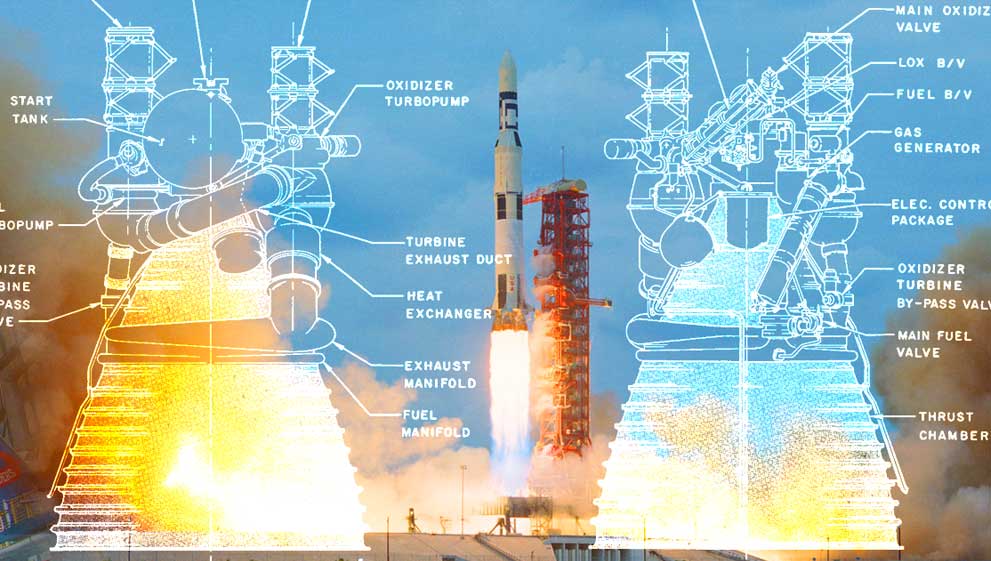For many years, the Saturn V was the largest and most powerful of these aerospace platforms. NASA developed it for the Apollo moon missions and used it to launch Skylab into space. The Saturn V was then went on to launch 24 astronauts into space without any serious accidents occuring.
The United States developed the Saturn V rocket as a heavy-lift vehicle during the space race with the Soviet Union in the 1960s. Renowned German scientific genius and space enthusiast Wernher von Braun was involved in the program alongside many other important researchers. NASA purpose-built the Saturn V rocket to launch the Apollo lunar landers into outer-space.
The 1.5-million-pound-thrust F-1 engine powered the first stage of the 363-foot-long Saturn V rocket that carried astronauts to the Moon between 1969 and 1972 as part of the Apollo program, completing six successful landing missions. The first stage of the Saturn V had five F-1s with a combined takeoff thrust of 7.5 million pounds. A fully fueled Saturn V weighs 6.5 million pounds. These engines are made of stainless steel, for example the thrust chamber is made of stainless steel tubing with walls that are 0.012 inches thick. The injector surface of the thrust chamber is also porous and consists of layers of stainless steel wire mesh.
Neil Armstrong and Buzz Aldrin didn't enjoy many 'conveniences' on board their rocket, but if they had.. no doubt they would have gone for some of our Stianless Steel products, like our stainlesss steel hand wash basins!.
On a different note, did you know what did Neil Armstrong did after he stepped on Buzz Aldrin's toe? A. He Apollo-gized.
